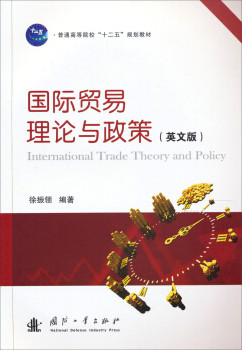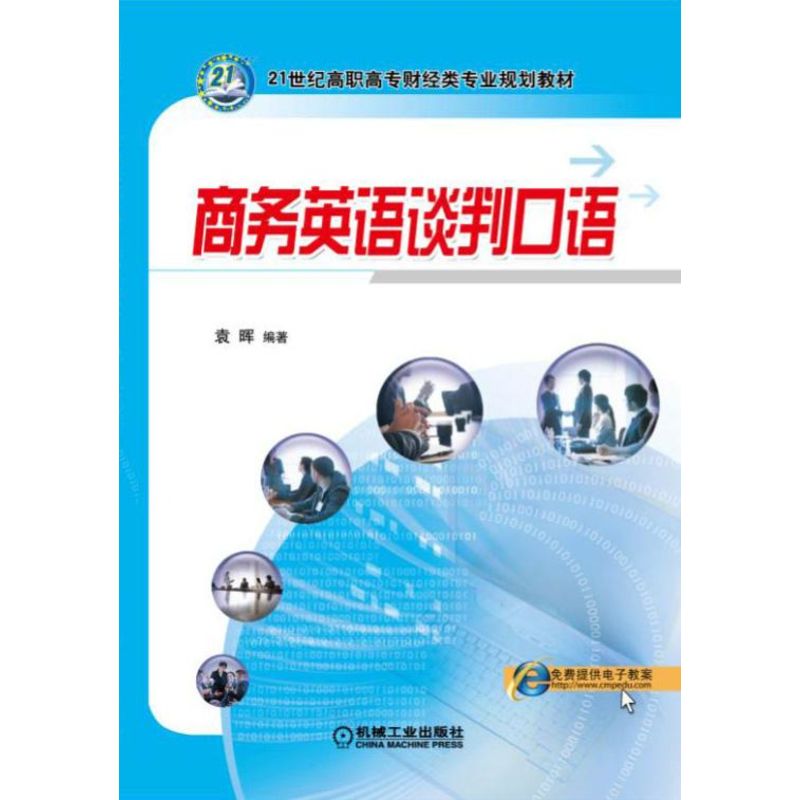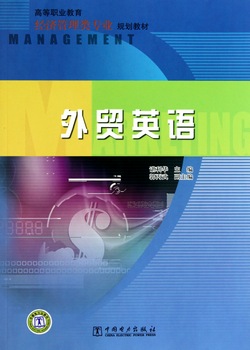商务沟通(第二版)(双语) / 高等院校十三五规划教材经济管理系列
作者: 张素红,[澳]卡洛琳·哈奇
出版时间:2020-01
出版社:清华大学出版社
- 清华大学出版社
- 9787302538011
- 2-1
- 320693
- 42212307-5
- 平装
- 16开
- 2020-01
- 管理学
- 工商管理
- 市场营销、国际贸易、电子商务
- 本科
《商务沟通(第2版 双语)/高等院校“十三五”规划教材·经济管理系列》内容主要包括两个方面:一是口头沟通,阐述了演讲、口头商务沟通、人际沟通及跨文化沟通等策略;二是书面沟通,主要包括如何撰写各类商务信函,如何构造写作的正面效应,如何运用翔实的事例使沟通更具说服力,如何撰写商务报告等。
学生通过对《商务沟通(第2版 双语)/高等院校“十三五”规划教材·经济管理系列》内容的学习,可提高写作能力、策划能力,增强与他人沟通的能力,培养说服他人、影响他人的能力。
《商务沟通(第2版 双语)/高等院校“十三五”规划教材·经济管理系列》不仅可以作为高等院校本科“商务沟通”“国际商务(英语)写作”等课程的教材,也可作为其他专业学生提高英语阅读能力、英语沟通能力的辅助阅读教材,还可作为从事管理工作的人员及企业内部沟通培训的参考书。
Part 1 Foundations for Management Communication
Chapter 1 Business Communication Management Success
1.1 The Importance of Communication Skills
1.2 Writing about Business Communication
1.3 Why We Wrote This Bilingual Book
1.4 The Values Explored in This Book
1.5 Does Experience Bear Out These Claims
1.6 Myths of Communication
Chapter 2 The Challenges for Communication in the New Century
2.1 About Communication
2.1.1 Communicating in organizations
2.1.2 The components of communication
2.2 The Role of Communication in Business
2.2.1 Communication on jobs
2.2.2 Internal and External Communication
2.2.3 Formal communication and informal communication
2.2.4 Business communication
2.2.5 External Communication Network
2.3 The Barriers to Effective Business Communication, and How to Overcome Them
2.3.1 Verbal barriers
2.3.2 Nonverbal barriers
2.3.3 Other barriers to communication
2.4 Criteria for Effective Messages
2.5 How to Solve Business Communication Problems
2.5.1 Understand the situation
2.5.2 Brainstorming solutions
2.6 Trends and Challenges in Business and Administration Communication
2.6.1 Focus on quality and customer’s needs
2.6.2 Entrepreneurship and outsourcing
2.6.3 Teams
2.6.4 Diversity
2.6.5 Rapid rate of change
2.6.6 Development of technology
Summary
Questions for Discussion
Exercises
Part 2 Oral Communication in Business
Chapter 3 Winning Hearts and Minds Through Effective Presentations
3.1 The Gentle Art of Persuasion
3.2 Persuading Others
3.3 Getting to the Heart and Soul of Persuasion
3.4 Audience, Audience, Audience
3.4.1 Principle 1: The situation itself is critical
3.4.2 Principle 2: The frame of mind of your audience really counts
3.4.3 Principle 3: The preferences of your audience for certain types of communication are important
3.4.4 Principle 4: The demographics of your audience are an important consideration in sizing up how and what to communicate
3.4.5 Developing a persuasive argument
3.5 Building Credibility (Ethos)
3.6 Winning Hearts Through Winning Words (Pathos)
3.7 Winning Minds Through Reasoning and Evidence (Logos)
3.8 Preparing to Present
3.8.1 Step 1: Be mentally prepared
3.8.2 Step 2: Plan your material
3.8.3 Step 3: Practice your presentation
3.8.4 Step 4: Bring your presentation together
Summary
Questions for Discussion
Exercises
Chapter 4 Cross-Cultural Management and Business Communication
4.1 Understanding Our Cross-Cultural Behaviors
4.2 Cultural Concepts and the Differences between Chinese and Foreign Business Communication Practice
4.2.1 Power and relationships
4.2.2 Context and communication
4.2.3 Business practices
4.2.4 The role of individual differences in shaping cross-cultural encounters
4.2.5 The role of English as a second language in shaping cross-cultural encounters
4.3 How to Handle Cross-Cultural Communication Effectively
4.4 Learning about and Respecting Other Cultures
4.4.1 Handling of conflicts
4.4.2 Rituals and formality
4.4.3 Managing face and embarrassment
4.4.4 Learning approaches and receiving feedback
4.4.5 Avoiding misunderstanding in cross-cultural business communication
Summary
Questions for Discussion
Exercises
Chapter 5 Getting the Best from Communication Technologies in Business
5.1 The Opportunities and Challenges of Communication Technology Use
5.1.1 The history of our communication technologies
5.1.2 Principles of communication and professionalism
5.2 Working Together
5.2.1 Virtual teams
5.2.2 Digital Convergence
5.2.3 Social media—WeChat
5.3 Using Email Communication
5.3.1 Principles
5.3.2 When should I not send an email
5.3.3 Guidelines for effective email for business communication
5.4 Balancing the Use of Smart Phones and Face-to-Face Communication
5.5 Developing Effective Presentations
5.5.1 Principles and guidelines
5.5.2 Misusing technology
5.5.3 Using technology effectively
5.5.4 Deciding when to use visual support
5.5.5 Desktop presentation software
5.5.6 Music, visuals and voice-over
5.5.7 Tips for visual and audio support
Summary
Questions for Discussion
Exercises
Part 3 Written Communication in Business
Chapter 6 Guidelines for Management Communication Writing
6.1 The Differences Between Oral and Written Communication
6.2 The Importance of Skillful Writing
6.3 The Costs of Poor Correspondence
6.3.1 Wasted time
6.3.2 Wasted effort
6.3.3 Lost goodwill
6.4 Planning Your Writing
6.4.1 Purpose: What are you trying to communicate
6.4.2 Audience: To whom you are writing
6.5 Making Your Writing Easy to Read
6.5.1 Choose words carefully
6.5.2 As you write and revise sentences
6.5.3 Tighten your writing
6.5.4 As you write and revise paragraphs
Summary
Questions for Discussion
Exercises
Chapter 7 Correspondence
7.1 Writing for a Positive Effect
7.1.1 The Importance of clarity and a positive effect
7.1.2 Emphasizing “You” more than
7.1.3 Showing a warm, friendly tone
7.2 The Importance of Readable Format
7.3 Parts of Standard Business Letter
7.3.1 Letterhead
7.3.2 Date
7.3.3 Inside address
7.3.4 Subject statement
7.3.5 Attention line
7.3.6 Salutation
7.3.7 Body of your letter
7.3.8 Complimentary close
7.3.9 Signature
7.3.10 Final notations
7.3.11 Enclosure
7.4 A Note about Format and Font
7.4.1 Block format
7.4.2 Indented format
7.4.3 Modified block format
7.5 Saying “Yes” and “No” in a Letter
7.5.1 The prevalence of directness in business
7.5.2 Format for “Yes” letters (sending positive message)
7.6 Delivering Bad News
7.6.1 Negative message’s purposes
7.6.2 The parts of a negative message
7.7 Getting the Tone Right in Negative Messages
7.8 Persuasive Messages
7.9 Sales letter
7.10 Developing successful memoranda
Summary
Questions for Discussion
Exercises
Chapter 8 Proposals, Reports and Business Plans
8.1 Writing a Proposal
8.1.1 About a proposal
8.1.2 Project proposal
8.2 Writing a Report
8.2.1 Defining a report
8.2.2 Short reports
8.2.3 Long reports
8.3 How to Write a Business Plan
8.3.1 The importance of a business plan
8.3.2 The plan is not the business
8.3.3 Preparing for a business plan
8.3.4 Writing a business plan
Summary
Questions for Discussion
Exercises














